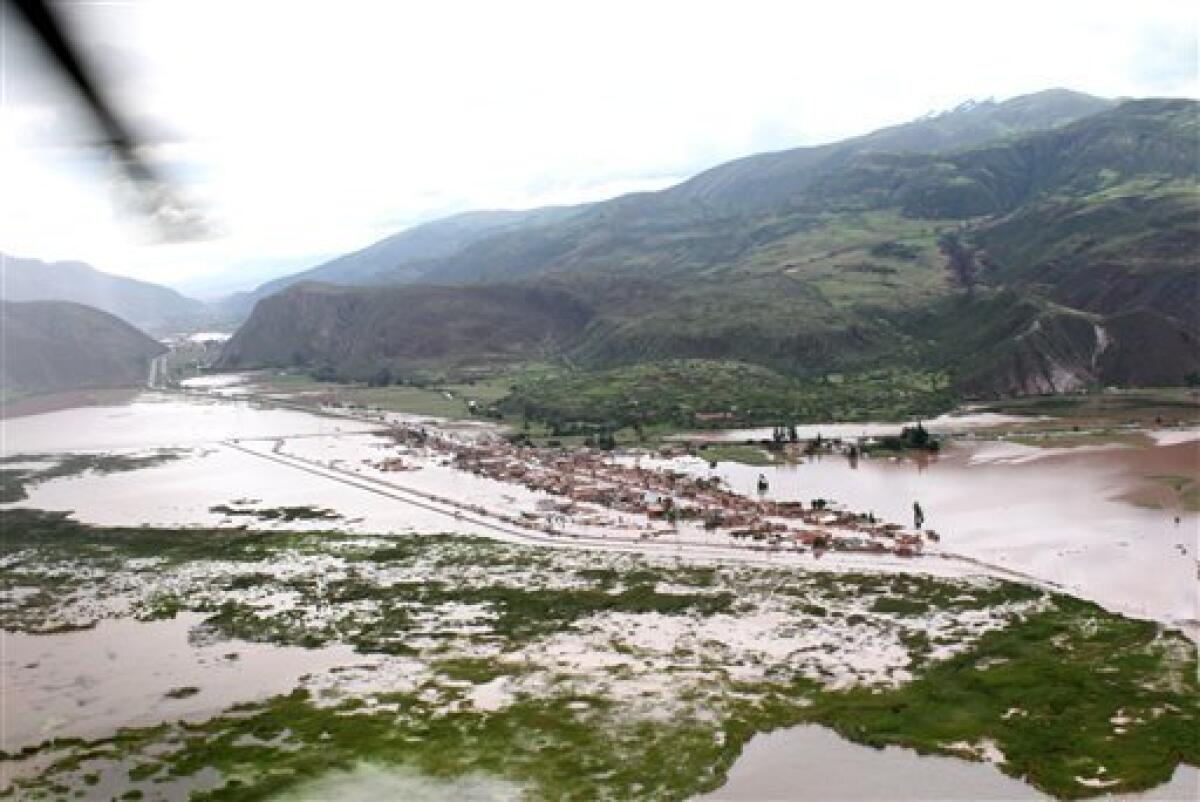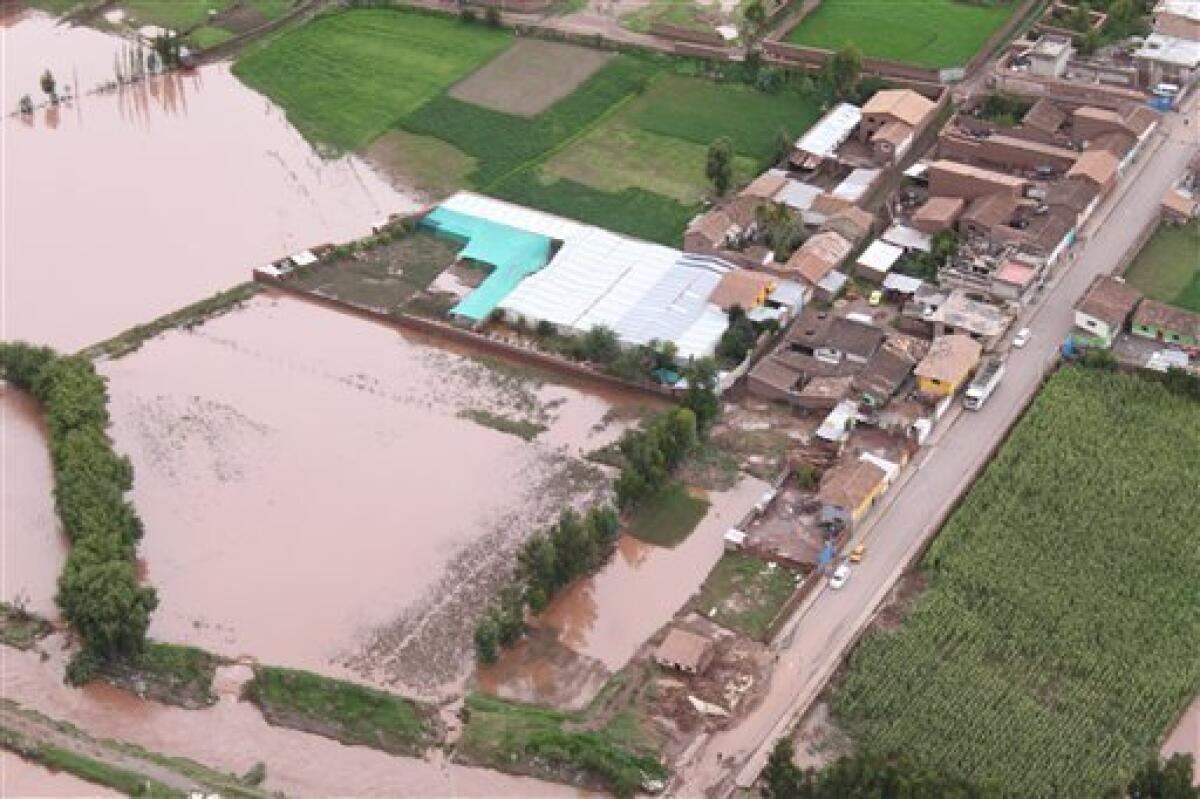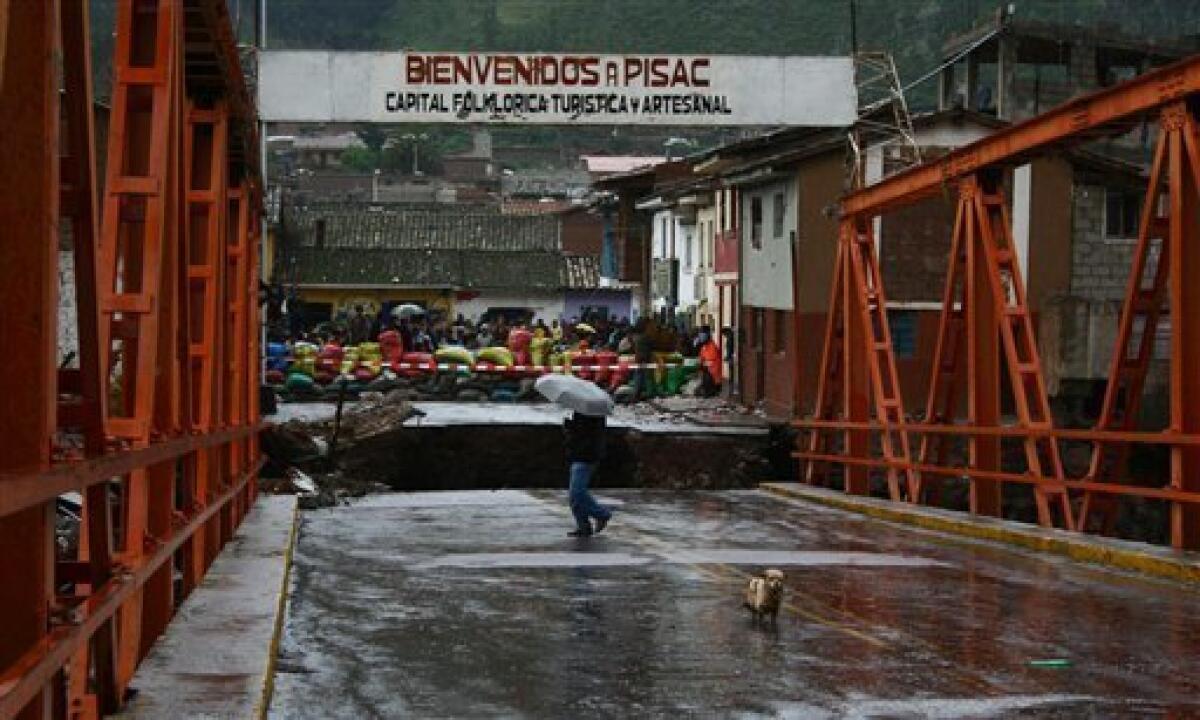Peru slide kills tourist, guide near Machu Picchu




A mudslide on the famed Inca trail to Machu Picchu killed an Argentine tourist and a Peruvian guide Tuesday, as authorities evacuated hundreds of tourists by helicopter from a flood zone where more than 1,500 others were still stranded.
Cuzco government spokesman Hernet Moscoso said the Argentine, identified as Lucia Ramallo, 23, and the guide, Washington Huaraya, were in their tents when a slope gave way and their tents were crushed. Three other tourists were injured.
Authorities closed the Inca trail, a popular tourist trek that follows a stone path built by the ancient civilization from their capital, Cuzco, to the Machu Picchu citadel.
The deaths raised to five the number of people killed by heavy rains that have caused floods and landslides and collapsed homes, Moscoso said.
Of the 2,000 stranded tourists in the villages of Machu Picchu Pueblo and Aguas Calientes near the citadel, government and private helicopters managed to fly 475 to safety Tuesday, Tourism Minister Martin Perez said.
“Tomorrow, if God helps us and the weather permits us, we should be able to get out 700 or 800 tourists in eight hours,” Perez said.
Hundreds of tourists were caught in the villages Sunday because mudslides blocked the railway to Cuzco, which is the only way in or out of the Machu Picchu area.
Peruvian and U.S. authorities sent four Peruvian military helicopters and four U.S. counternarcotics helicopters to bolster rescue efforts Tuesday. The U.S. helicopters are based in Peru and normally used for drug interdiction and police training.
Rail operator Perurail also rented two helicopters to ferry in supplies and evacuate tourists, the company said in a statement.
There was no immediate word on how many people were taken out.
In Washington, State Department spokesman P.J. Crowley said about 400 American citizens were believed to be stranded.
“These are difficult conditions,” he told reporters. “We’ve moved some embassy personnel from Lima to the area as well to try to provide assistance to the Peruvian police and military authorities.”
Some 700 Argentines, 309 Chileans and 30 Uruguayans were also stranded in Machu Picchu Pueblo, according to those countries’ embassies in Lima.
Five days of torrential rains in the Cuzco region have destroyed bridges, 250 houses and hundreds of acres (hectares) of crops, while blocking highways and the railway to Machu Picchu.
Perurail suspended train service Sunday due to mudslides and the flooding of the Urubamba River.
Tourists slept in Machu Picchu village’s train station and the central plaza after hostels ran out of space, while restaurants raised prices as food became scarce.
Travelers “are angry and worried, and some are getting desperate,” said Ruben Baldeon, the town spokesman.
Local media reported some tourists were trying to walk back along the tracks to a highway outside Cuzco.
Alberto Bisbal, disaster prevention director at Peru’s Civil Defense Institute, told The Associated Press that Perurail and the government were working to clear rock and mud from the tracks, and service might be able to resume Wednesday.
The downpours stopped Tuesday morning, but meteorologists predicted light precipitation for the rest of the week.
The rainy season in Peru’s southern highlands is expected to last through March.
Cuzco Gov. Hugo Gonzales estimated crop losses and damage to infrastructure, homes and schools could total $172 million in his province alone.